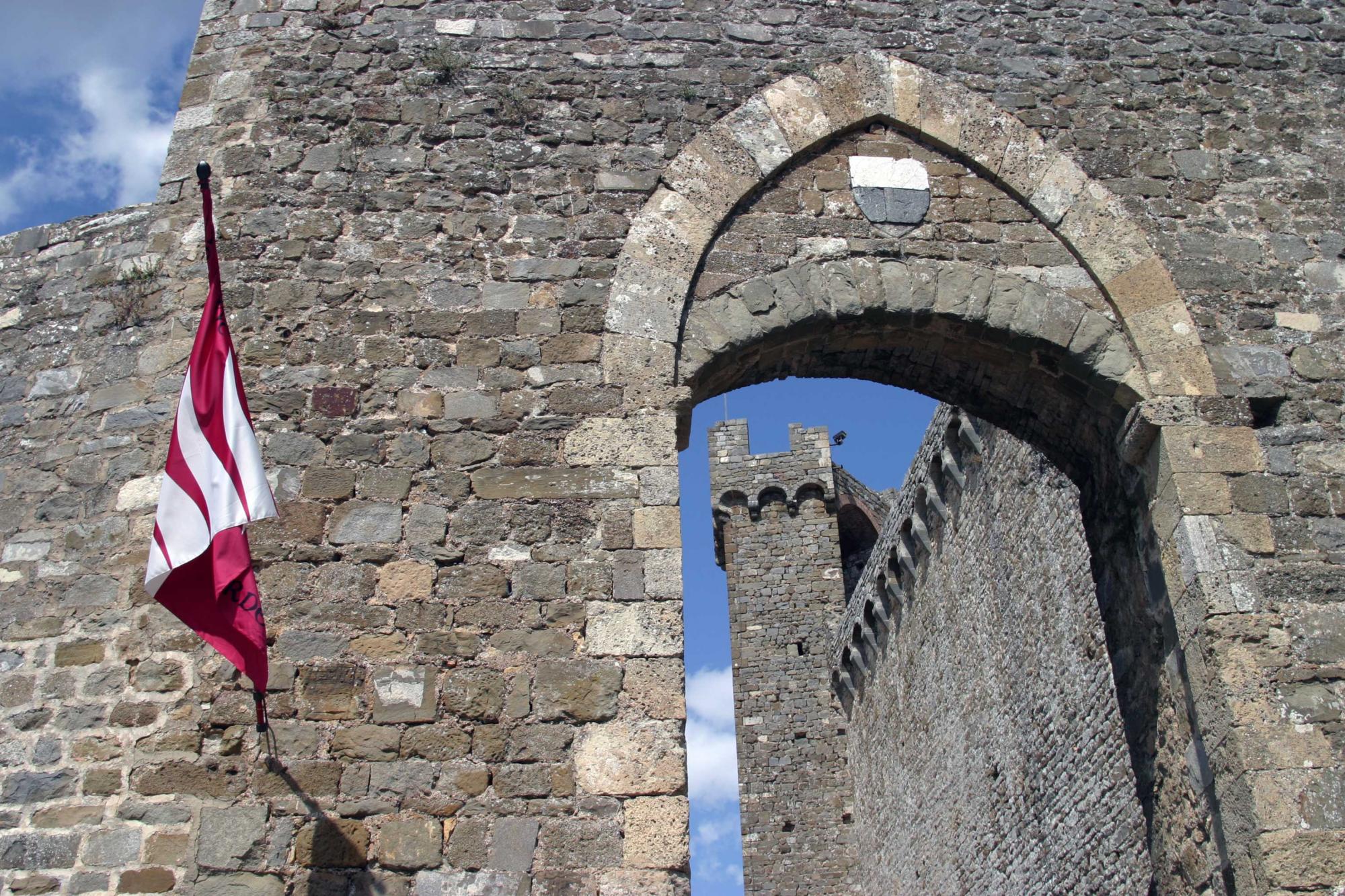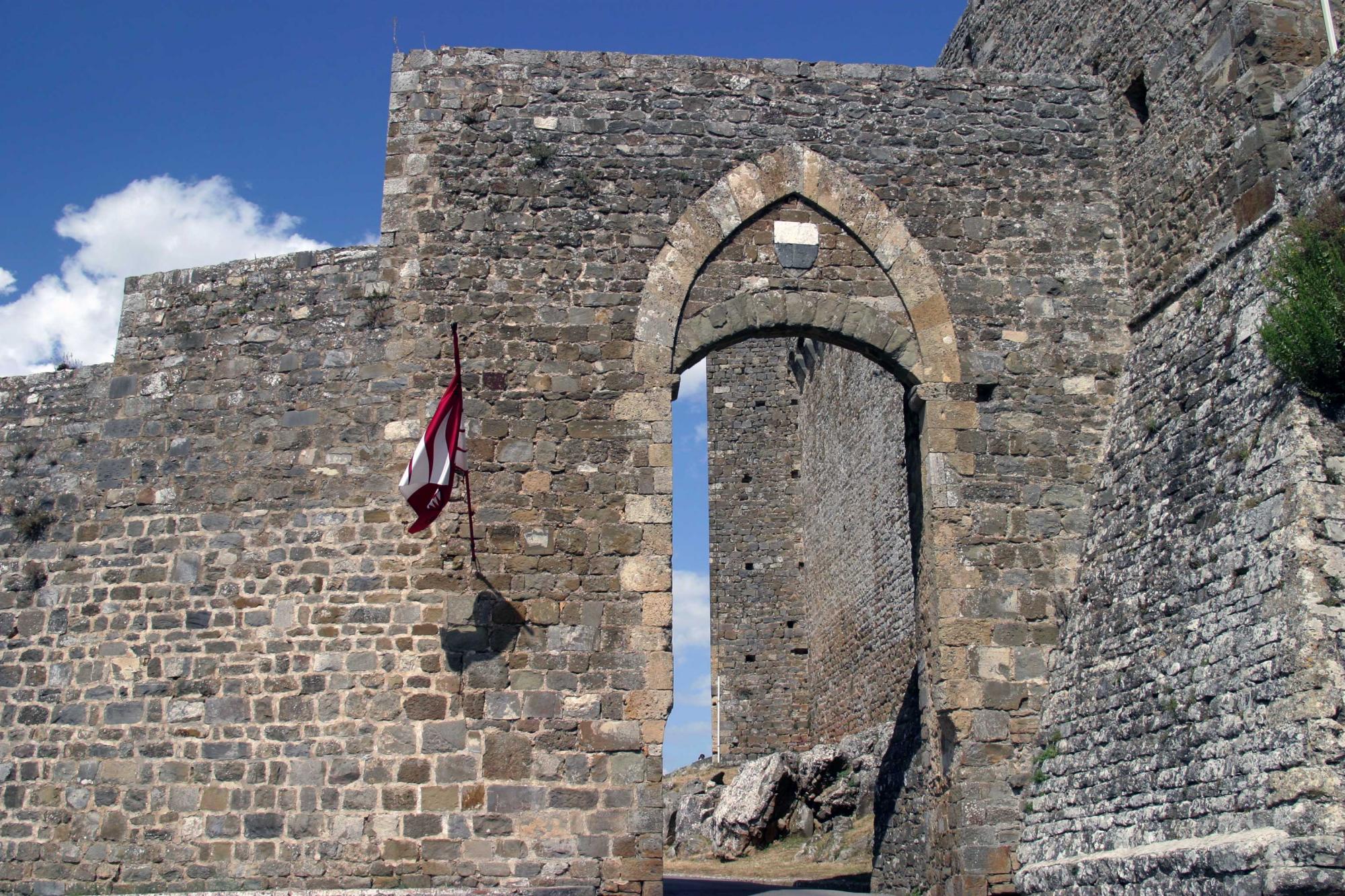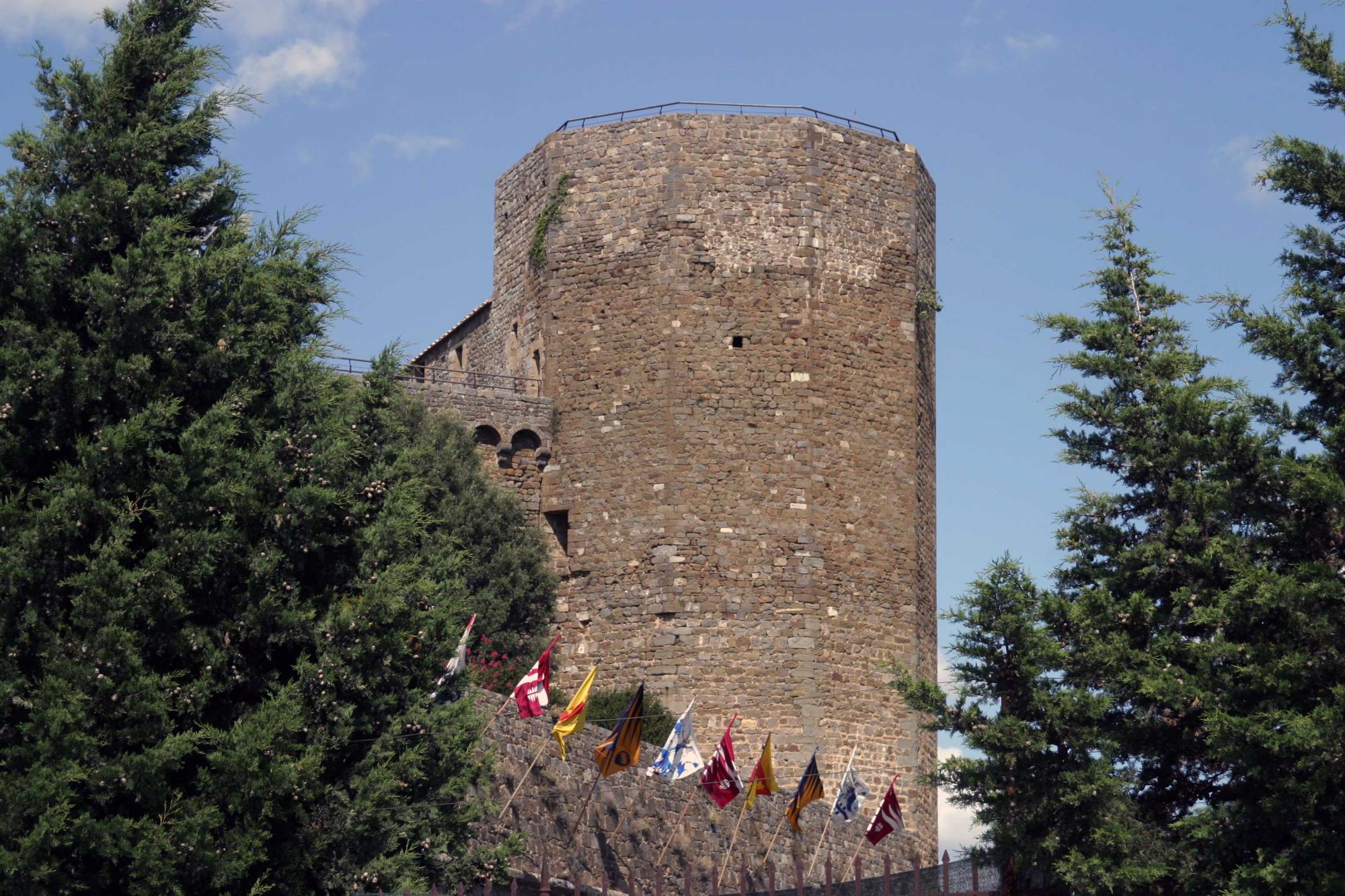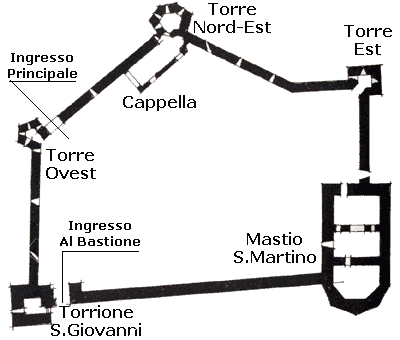

























How to reach
Montalcino can be easily reached from Siena following the Cassia road (SS2) up to Buonconvento, after a few km you find on the right a crossing road that leads to the town.
History
Montalcino rises in the heart of southern Tuscany. In the Middle Age the territory of Montalcino was divided between four ecclesiastical areas: Arezzo, Chiusi, Grosseto and Siena. This subdivision mirrored that of the antiquity, in fact here met the territories of the important Etruscan 'Lucumonies of' Arezzo, Chiusi, Roselle (Grosseto) and perhaps also of Volterra. Many recoveries of this time are today preserved in the Archaeological museum of Montalcino.
The medieval history of this area is full of innumerable black holes, that's why the whole written documentation was preserved in the destroyed archives of the Abbey of S.Antimo, from which the castle depended. Also the fact that the Francigena Road passed at east of the town, near the settlement of Torrenieri, didn't helped us to retrieve historical notices preceeding the second half of 12th century.

The history that we know starts from the end of the 12th century, with the free town of Montalcino allied with Siena during the war of the 1176, lost, against Florence. Montalcino offered resistence to the expansionists aims of Siena and the alliance was broken, consequently in the mid-13th century the castle was destroyed by the senese army, momentarily in peace with that Florentine (busy to eliminate the analogous obstacle constituted by Semifonte). The renewal of hostilities with Florence prevented the Senesi to complete the conquest of Montalcino but the castle remained under the protectorate of the Church and the Commune of Siena. After a rebellion attempt to conquer again its autonomy, in 1232 the castle was reoccupied and forced to a new alliance with Siena. After another insurrection in the 1252 the castle was conquered again by the Senesi but immediately lost due to the intervention in its help of Florence and Grosseto. To Montaperti battle Montalcino lined up with Florence against Siena and the victory of this last didn't do anything else than bring the city to a new loss of autonomy. In 1269 Siena was again defeat at Colle Valdelsa and Montalcino was freed again. Only after half the 14th century the castle returned under the control of Siena. In this period the fortifications were reconstructed to better contrl the city center.
By now Montalcino was Senese and in the 15th century became one of the most important centers of the Republic territory. In the following century the city and the castle withstand in 1553 the siege of the Medicean and Imperial army, during the war that brought Siena to the definitive capitulation of 1555. After the surrender many citizens of Siena reached Montalcino where, headed by Pietro Strozzi, let relive in exile the Republic. The city became the chief town of the territories not conquered by the Florentines and resisted until 1559 when, isolated by the fall of the castles of Talamone and Castiglione della Pescaia, offered its surrender and sworn fidelity to Cosimo de' Medici.
The castle is today practically intact. Its construction was begun in 1361 on the southern vertex of the 13th century city walls, incorporating the keep of S.Martino and the S.Giovanni tower. It looks as classic castle-enclosure, with pentagonal plant endowed with towers to all the angles. The tower of southeast is placed by the side of the keep. The walls and the towers have still practicable the complete watch-walk endowed of machicoulis (projection from the wall made of stone which has openings through which the defenders can fire upon an enemy directly below) in stone, supported by bows on brackets with inverted pyramid form. The northern towers are open on the side facing the courtyard. The castle incorporated also an ancient little basilica that became the chapel of the fortification, and its rests are still visible near the northeast tower. On the south side rise the mighty Medicean rampart, added by Cosimo at the half of the 16th century.